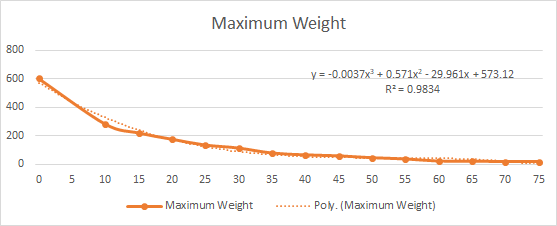Team Members:
Yinmiao Li (yl4121@nyu.edu)
Harry Lee (hl3794@nyu.edu)
Objective: Explore how distance and the number of magnetic affect the force of magnetics.
Materials:
- Permanent Magnets
- Paper
- Baskets with Ropes
- Go Pieces
- Electronic scale
- Empty Bottle
- Water
- Bucket
- Measuring Cup
Procedure:
- Explore the relationship between Magnetic Force and Distance

- Stick two permanent magnets together, place them vertically.
- Tie a rope under the nether one and a basket on the other side.
- Adding go pieces into the basket slowly, until the magnets separate.
- Take the last Go piece added out, measure the total weight of the equipment except for the upper magnet (this includes the weight for the neither magnet, the rope, the bucket, the go pieces, and the paper pieces(which will be added in the next step)).
- Adding pieces of A4 paper gradually, repeating steps a~d, measuring the maximum weight each situation can handle. In this experiment, the number of the pieces are as below:
0, 5, 10, 15, 20, 25, 30, 35, 40, 45, 50, 55, 60, 65, 70, 75 - Draw a graph of the statistics and analyzing the data.
- Explore the relationship between Magnetic Force and the number of Magnets

- Hang the empty bottle under only one magnet with rope.
- Pour water into the empty bottle until the bottle falls. (Pour 160ml every time at first, when the bottle is almost falling, add water 5ml a time).
- Repeat the process three times, and calculate the average.
- Add the number of magnets and repeat from step b. The only difference is adding water 5ml a time instead of 160ml at first. The above steps are repeated 12 times, with magnet numbers modification as below: 1,2,3,4,5,6,7,8,9,10,20,30
- Draw a graph and analyze the data.
Results:
- Relationship between Magnetic Force and Distance
While the distance is increasing slowly, the magnetic force is decreasing slower and slower.
- Relationship between Magnetic Force and the number of Magnets
The number of magnets has influences on the magnetic force. At the very beginning, with the increasing of numbers of the magnet, the magnetic force is increasing. As the numbers increasing, the magnetic force will stop increasing and stay the same.
Analysis:
- Relationship between Magnetic Force and Distance
The data are listed below:
| Pieces of Paper | 0 | 10 | 15 | 20 | 25 | 30 | 35 | 40 | 45 | 50 | 55 | 60 | 65 | 70 | 75 |
| Maximum weight | 602 | 281 | 219 | 175 | 134 | 113 | 78 | 65 | 58 | 45 | 36 | 21 | 20 | 18 | 17 |
With the diagram:

- Relationship between Magnetic Force and the number of Magnets
The data are listed below:
| Number of Magnets | 1 | 2 | 3 | 4 | 5 | 6 | 7 | 8 | 9 | 10 | 20 | 30 |
| Volume of Water | 1000 | 1040 | 1060 | 1080 | 1090 | 1100 | 1100 | 1100 | 1105 | 1105 | 1105 | 1105 |
The diagram:

Conclusions:
From the experiments, we found out that distance and the number of magnets have influences on the magnetic force. The relationship between magnetic force and distance is that with the distance increasing steadily, by using the method of regression statistics the magnetic force decreases slower and slower and could be considered as the rough expression shown below:
y = -0.0037x3 + 0.571x2 – 29.961x + 573.12
Due to the limit of equipment, and other reasons (for example, the magnets cannot be considered as two particles when they are really close to each other) we cannot find out a general formula for this phenomenon.
And the relationship between magnetic force and the number of magnets is that with the increasing of the number of the magnet, the magnetic force will increase, but the increasing rate will become much much slower. Due to the limit of equipment, we could not collect that much data and the volume of the water is not very accurate. The data analysis with the formula shown below:
y = 42.34ln(x) + 1011.1
The possible reason that the magnetic force doesn’t have a linear relationship with the number of the magnet is that the magnets are thick, and when they stack together, the distance from the first magnets to the last magnet is very far, and the magnetic force barely exist, so the increase is very small or even approaches to zero.
